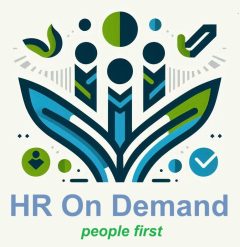**Navigating Hybrid Work Environments: Adapting Communication Strategies for the Modern Workplace**
Hybrid work environments have reshaped how companies operate, with many small and medium-sized businesses increasingly adopting this flexible work model. Navigating these environments requires not just a physical adaptation but also a significant overhaul in communication strategies. Here’s how businesses can adapt their communication methods to thrive in hybrid work settings. **
The Emergence of Hybrid Work Models
The concept of hybrid work has surged in popularity, blending remote work with in-office presence. This model offers flexibility that was previously unimaginable while maintaining the need for face-to-face interactions for collaborative work and team cohesion. According to a **Global Workplace Analytics** report, over 80% of companies plan to allow employees to work remotely some of the time as they move towards a hybrid model. This shift denotes a major cultural change in the workplace, underscoring the necessity for refined human resources policies and communication strategies.
Rethinking Communication Tools and Platforms
Communication in a hybrid work setup involves a mix of synchronous and asynchronous methods. Here’s how you can adapt:
– **Chatham House Rule:** Use tools like Zoom for synchronous interactions where real-time discussion is crucial. However, ensure these are used judiciously to avoid meeting fatigue.
– **Asynchronous Communication:** Tools like Slack or Microsoft Teams are invaluable for keeping the dialogue open when not all team members are online simultaneously. This approach supports telework effectively, allowing for response times that fit personal schedules.
– **Document Sharing:** Platforms like Google Drive or OneDrive enable real-time editing, feedback, and collaboration on documents, reducing the necessity for synchronous meetings.
Establishing Clear Communication Protocols
For hybrid work environments to function smoothly:
– **Set Expectations:** Define when certain communication tools should be used. For example, emergency issues can be addressed via instant messaging or phone calls, while project updates can be scheduled in weekly meetings or via email.
– **Response Times:** Establish norms for response times. This helps manage expectations and workflow, especially when operating across different time zones.
– **Visibility:** Ensure that remote workers are not out of sight, out of mind. Regular check-ins or updates via newsletters or digital boards can keep remote employees engaged and visible.
Enhancing Remote Engagement
A common challenge in hybrid models is ensuring remote workers feel as engaged as their in-office counterparts:
– **Virtual Water Coolers:** Introduce virtual spaces where colleagues can interact casually, mimicking the spontaneous hallway conversations. This can range from virtual coffee breaks to book clubs.
– **Inclusive Decision Making:** Tailor your meeting culture to include remote participation. Tools like Miro or MURAL can be used for collaborative brainstorming sessions to keep remote workers involved.
– **Celebrate Milestones:** Leverage technology to mark celebrations or company events. A shared virtual experience can bridge the physical gap.
Leveraging Company Culture for Communication
Cultivating a workplace culture that embraces hybrid work:
– **Transparency:** With hybrid teams, transparency in decision-making and communication is paramount. Regularly update policies and practices that affect remote work and in-office interactions.
– **Empathy Training:** HR should focus on programs that enhance understanding and empathy across the hybrid divide. This includes sensitivity towards remote workers’ challenges with work-life balance.
– **Feedback Loops:** Implement feedback mechanisms, perhaps through anonymous surveys or regular one-on-one check-ins, to understand how well hybrid communication strategies are working.
Statistics and Real-World Examples
**A survey by Gallup** found that employees who work remotely at least some of the time are 22% happier with their job flexibility than those who work on-site. Companies like **GitLab** have fully embraced remote-first cultures, providing a playbook on how to manage mostly remote teams effectively.
Another compelling example comes from **Trello**, where they’ve designed their workspace and digital ecosystem to ensure that whether employees are at their desks or on the go, productivity remains consistent.
Actionable Insights for Small to Medium Enterprises
Here are practical steps to take:
– **Invest in Technology:** Ensure all employees, especially those remote, have the technology they need to communicate and collaborate effectively.
– **Training:** Offer training on new tools and platforms to make sure everyone is on the same page. According to **Deloitte**, investments in employee training yield ROI as high as 250%.
– **Mental Health:** Address the mental health aspect of hybrid work by providing resources and support. Remote work can lead to social isolation if not managed correctly.
– **Regular Assessments:** Regularly assess how your hybrid environment is functioning. This not only helps in making adjustments but also shows employees that their comfort and productivity matter.
In conclusion, navigating hybrid work environments demands a comprehensive overhaul of traditional communication strategies. By focusing on inclusivity, transparency, and leveraging the right tools, SMEs can not only adapt but also thrive in this new paradigm. The era of hybrid work is here to stay, and with the right adjustments, businesses can ensure that their team remains connected, collaborative, and creative, regardless of where they are working from.




